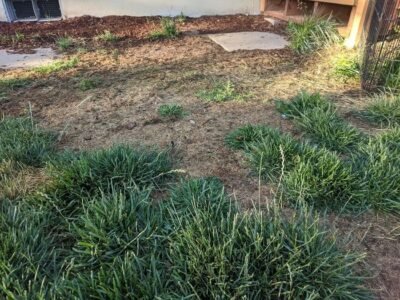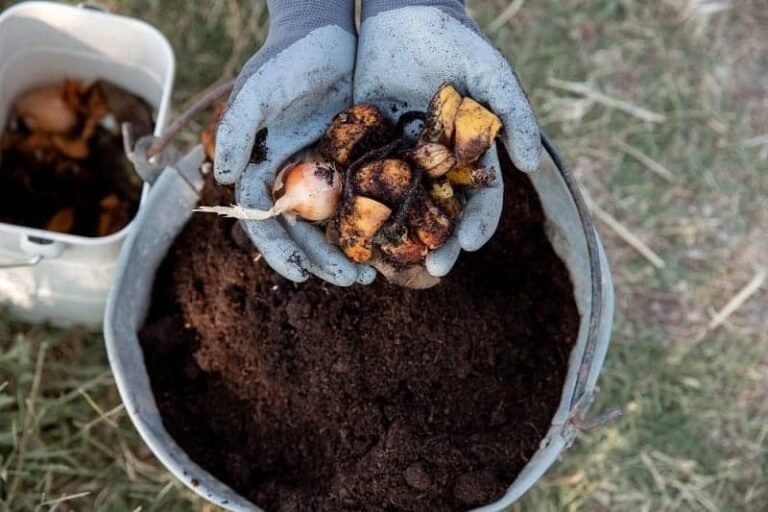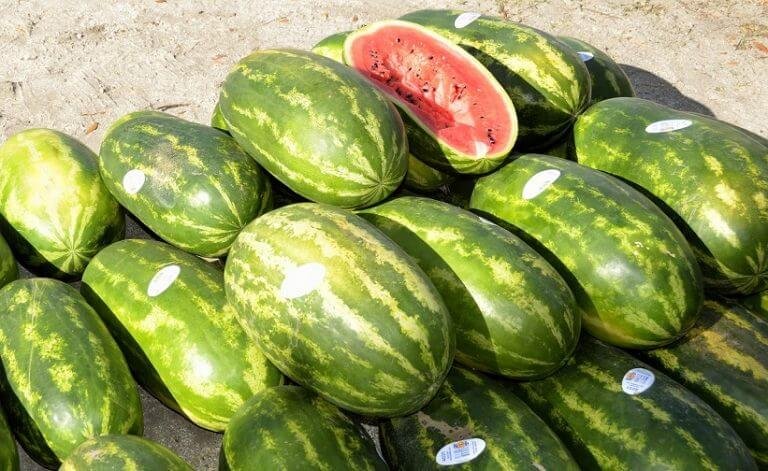How To Grow Broccoli From Seeds

Do you know that you can grow broccoli from seeds?
Yes, you can and this article will analyze how to do that for you and so much more.
Here, you will learn how to grow broccoli from seeds.
Also, you will learn about its diseases and how to effectively manage them.
You will learn how to harvest and store your broccoli.
In addition, you will get 5 totally free tips for taking adequate care of broccoli.
Let’s jump right in.

Overview of the Broccoli Plant
Broccoli (Brassica oleracea var. italica) is an edible green plant in the cabbage family (Brassicacaea) whose large flowering head, stalk, and small leaves are eaten as a vegetable.
Broccoli has large flower heads, usually dark green, arranged in a tree-like structure branching out from a thick stalk which is usually light green.
The mass of flower heads is surrounded by leaves.
Broccoli resembles cauliflower, which is a different but closely related cultivar group of the same Brassica species.
It is eaten either raw or cooked.
The word broccoli comes from the Italian plural of broccolo which means ‘the flowering crest of a cabbage.
Broccoli is the result of breeding landrace Brassica crops in the northern Mediterranean starting in about the sixth century BCE.
Broccoli has its origins in primitive cultivars grown in the Roman Empire and was most likely improved via artificial selection in the southern Italian Peninsula.
Other cultivar groups of Brassica oleracea include cabbage (Capitata Group), cauliflower and Romanesco broccoli (Botrytis Group), kale (Acephala Group), and kai-lan (Alboglabra Group).
Different Varieties Of Broccoli
1. Calabrese Broccoli
The most familiar is Calabrese broccoli, often referred to simply as “broccoli”.
It is named after Calabria in Italy and it has large (10 -to 20-cm) green heads and thick stalks
It is a cool-season annual crop.
2. Sprouting broccoli
Sprouting broccoli (white or purple) has a larger number of heads with many thin stalks.
Purple cauliflower or Violet Cauliflower is a type of broccoli grown in Europe and North America.
It has a head shaped like cauliflower but consists of many tiny flower buds.
It sometimes, but not always, has a purple cast to the tips of the flower buds and it may also be red, white, green, or other colors.
Other popular cultivars include Belstar, Blue Wind, Coronado Crown, Destiny, DiCicco, Green Goliath, Green Magic, Purple Sprouting, Romanesco, Sun King, and Waltham 29.
Health Benefits Of Broccoli
Broccoli is so nutritious with its many amazing health benefits.
1. Broccoli Is Low In Calories
By conventional nutritional standards, broccoli stands out. It’s low in calories, high in fiber and vitamins C, K, and folate, plus it contains significant amounts of several other vitamins and minerals.
2. It Contains Antioxidants That Offer Health-Protective Effects
The antioxidant content of broccoli may be one of its main benefits for human health.
Antioxidants are molecules that neutralize cell damage caused by free radicals.
This can lead to reduced inflammation and an overall health-protective effect.
Broccoli has high levels of glucoraphanin, a compound that converts into an antioxidant called sulforaphane.
3. Broccoli May Protect Against Certain Cancer Types
Cruciferous vegetables, such as broccoli contain various bioactive compounds that may reduce cell damage caused by certain chronic diseases.
Many studies have shown that eating cruciferous vegetables may help protect against certain types of cancer including the following cancers.
- Breast cancer
- Prostate cancer
- Stomach/Gastric cancer
- Bladder cancer
- Kidney/Renal cancer
4. It Contains Antioxidants and Fiber That Can Aid Blood Sugar Control
Eating broccoli may support blood sugar control in people with diabetes.
Although research has not shown how it really happens, it may be related to broccoli’s antioxidant content.
A recent study showed a significant decrease in insulin resistance in people with type 2 diabetes who consumed broccoli sprouts daily for one month.
Broccoli is also a good source of fiber.
Research indicates that a higher intake of dietary fiber is associated with lower blood sugar and improved diabetic control.
5. Broccoli Promotes Healthy Digestion and Reduced Constipation
Bowel regularity and a strong community of healthy bacteria within your colon are two vital components of digestive health.
Eating fiber and antioxidant-rich foods like broccoli may play a vital role in maintaining perfect and healthy gut functions.
6. It May Support Heart Health In A Lot Of Ways
Several studies have shown that broccoli may support heart health in a lot of ways.
Bad cholesterol and triglyceride levels are known to be the major risk factors for heart disease.
Broccoli may play a role in improving these markers.
Also, broccoli has a potentially protective effect against cell death and oxidative stress in heart tissue following cardiac arrest.
In addition, a higher intake of foods that are rich in fiber is associated with a reduced risk of heart disease.
7. Broccoli Supports Healthy Brain Function and Slows Down Mental Decline.
Some of the many nutrients and compounds in broccoli may slow mental decline and support healthy brain function.
A study in older adults showed that one serving of dark green vegetables per day may resist mental decline associated with aging.
Conditions To Grow Broccoli From Seeds
- Broccoli likes it best in temperatures between 18 and 23°C (64 and 73°F).
- It will grow well in a well-drained, yet moisture-retentive, fertile soil with an ideal pH between 6 to 7.
- The soil should have a texture between sandy and clay loam.
- Broccoli prefers full direct sun of at least 6 to 8 hours.
- Broccoli prefers full sun and organic, fertile, rich soil with a pH of 6 to 7.
- Growing broccoli is done best in soils that are well-drained with
- Keep soil moist by watering at least 1 to 1.5 inches every week.
How To Grow Broccoli From Seeds

Step 1: How To Prepare Broccoli Seeds For Planting
Unlike some other plants, broccoli seeds soaking is not a must but it does help them germinate faster and more reliably.
If you decide to try it, simply soak your seeds in warm water overnight before sowing them.
Step 2: How To Prepare The Soil For Planting Of Broccoli
When growing Broccoli, prepare the soil to a depth of 12-20” (30-51cm).
Lay down a 2-3” (5-8 cm) layer of good garden compost or composted manure when you prepare the soil.
Step 3: How To Plant The Broccoli Seeds
Set two seeds apiece in holes ¼ to ½ inch deep.
Let the holes have a spacing of 18 inches in between and spacing of rows of about 24 inches,
Keep the area moist with a spray bottle until germination occurs which should be about 7-10 days.
Step 4: How To Care For Your Broccoli Seeds As They Grow
At its growing stage, your broccoli will need a lot of water.
Therefore, water your broccoli one to one and a half inches per week and ensure that you water the base.
Make sure that you don’t water the heads because it can cause your broccoli to rot.
Also, let your broccoli grow in full and direct sun for about 6 to 8 hours per day.
Broccoli is a cold-weather crop, meaning that it grows better with temperature ranges between 65 and 75 degrees Fahrenheit (18 and 24 degrees Celsius).
Step 5: Fertilization Of Broccoli
Fertilize broccoli three weeks after transplanting seedlings into the garden.
Use a low-nitrogen fertilizer, such as the 5-10-10 formula.
How To Harvest Broccoli
- Harvest broccoli in the morning, when the buds of the head are firm and tight, just before the heads flower.
- If you do see yellow petals, harvest immediately, as the quality will decrease rapidly.
- Cut heads from the plant, taking at least 6 inches of stem.
- Make a slanted cut on the stalk to allow water to slide away.
- Water can pool and rot the center of a flat-cut stalk, ruining the secondary heads.
How To Properly Store Broccoli
After harvesting your fresh broccoli, store it in a loosely closed or perforated plastic bag.
This is simply because broccoli needs air circulation to stay fresh.
Therefore, avoid sealing or knotting the bag.
You can also store it in the refrigerator for up to 5 days.
Diseases Of Broccoli And Their Management Techniques
1. Downy Mildew
You may notice yellow, angular spots on upper leaf surfaces that turn brown and white/purple/gray cottony growth on leaf undersides only.
Also, distorted leaves appear and defoliation may occur.
To manage, remove plant debris, choose resistant varieties and ensure good air circulation.
Also, make sure that you avoid overhead watering.
2. Clubroot
This disease causes wilted/stunted plants, yellowing of leaves, and swelling of roots.
When you detect the disease, destroy all infected plants and solarize the soil.
Also, maintain soil pH of around 7.2, disinfect tools and rotate crops.
3. White rust
Chalk-white blisters mainly on leaf undersides and small, yellow-green spots or blisters may occur.
Also, blisters may form circular arrangements on upper leaf surfaces.
Destroy infected plants, choose resistant varieties, destroy crop residue and rotate crops.
4. Alternaria Leaf Spot
This infection is caused by the fungi, Alternaria brassicicola and A. brassicae, which thrive in high humidity and temperatures between 60 and 78OF.
It appears first as tiny black spots on the older leaves and heads and later expands and turns yellow with a black halo around them.
To manage, and sanitize all equipment and tools before and after use.
Also, practice crop rotation, and a liquid copper fungicide can slow the spread or even eliminate it at the early stage.
5. Blackleg
Blackleg is one of broccoli’s serious problems because it reduces yield.
Also known as stem canker, blackleg is caused by the fungus Leptosphaeria maculans.
It can cause black lesions or rot on the stems, and brown or ash-colored leaf spots and holes.
Seedlings may die or fail to emerge and the roots rot away underground.
Heads may normally form but later develop brown lesions.
Biofungicides containing Bacillus subtilis can help as well as crop rotation.
6. Fusarium Yellows
Caused by Fusarium oxysporum, this disease can affect any member of the brassica genus including broccoli.
Fusarium thrives in temperatures around 75 to 85OF.
It turns the leaves and heads of your broccoli to yellow or pale green and it may stunt the plant and the head will be small.
It has no cure but you can plant resistant cultivars like Covina and Batavia.
7. Mosaic Virus
Mosaic Virus can be seen as yellow mosaic patterns or black necrotic rings or spots on the leaves.
This disease is spread by Aphids and lives in weedy crucifers.
One way to manage it is to always weed around your broccoli plants.
Also, pull out all infected plants and destroy them to stop the spread of the disease.
Tips For Care Of Broccoli
These five simple tips will help you to care for your broccoli plant so that it produces better.
- Provide a uniform water supply to your plants. You should water the garden in the morning so the foliage is dry before the sun goes down.
- The only pruning your plant needs is harvesting. When you harvest, leave the small sprouts to grow.
- Never stress your plants in any way because it will affect your harvest.
- Protect your plants in hot summers
- Harvest as soon as you notice your broccoli is ready.
Conclusion
I know that this article has provided you with all the information you need on how to grow broccoli from seeds.
At this point, you should be able to grow broccoli from seeds without any extra help.
Also, you should know what to do about the various diseases your plants may have.
You should also know the amazing health benefits of broccoli.
In addition, you should know how to harvest and store your broccoli
If you have any other questions, send them and we will get back to you.
Frequently Asked Questions (FAQs)
How do I know that my broccoli is ready for harvesting?
You’ll know they are ready when they are deep green with small, tightly packed buds.
How many days does it take broccoli to fully mature?
It takes around 100 days for broccoli to reach maturity.
Why is my broccoli heads small?
It is caused by an irregular supply of water.
When you don’t supply enough water, your plant will produce small heads with a bitter taste.Which variety of broccoli is easy to grow for a beginner?
Calabrese broccoli is the best variety for beginners to try which is why it’s also known as simple broccoli.
References
- Wikipedia – Broccoli
- Healthline – Benefits Of Broccoli
- Plant Village – Broccoli | Diseases





